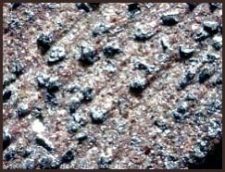The distinction made between a hard and a soft grinding wheel refers to the bond structure, whose job is to retain the abrasive particles responsible for cutting. Regardless of the label, softer bonds are known to produce a more aggressive cut than harder bonds. Keeping this in mind, let us explore how the bond structure impacts the grinding process.

The main difference between softer bonds (like resin) and harder bonds (like metal) is the abrasive renewal rate. This refers to the amount of time it takes for the bond to wear down, releasing the dulled abrasive particle on the surface and revealing new, sharp grit for cutting. Softer bonds wear more quickly, thus revealing new grit more often. This allows for more aggressive cutting, whereas harder bonds will retain the same surface particles for longer, resulting in an inability to remove large amounts of material at a quick rate.




